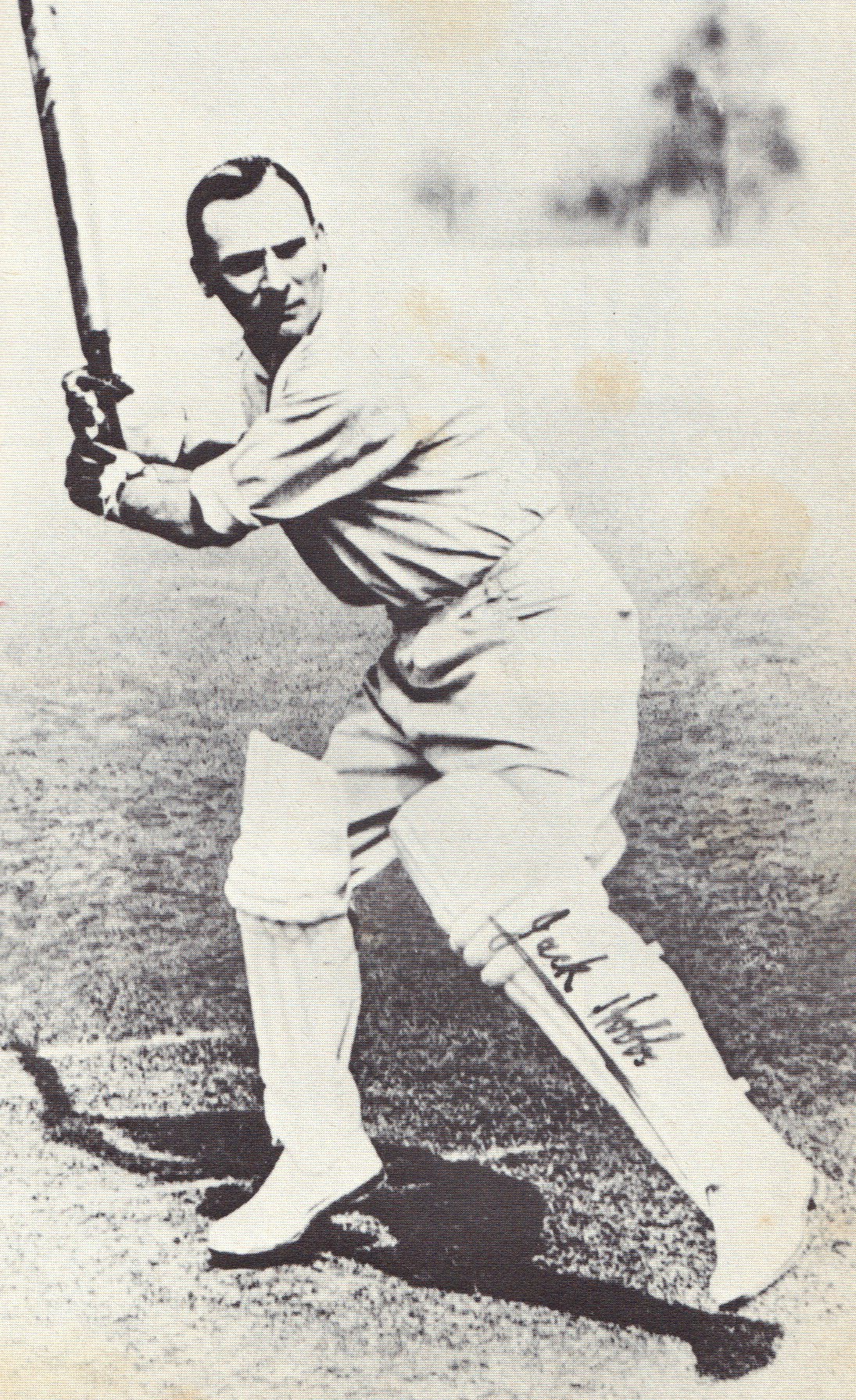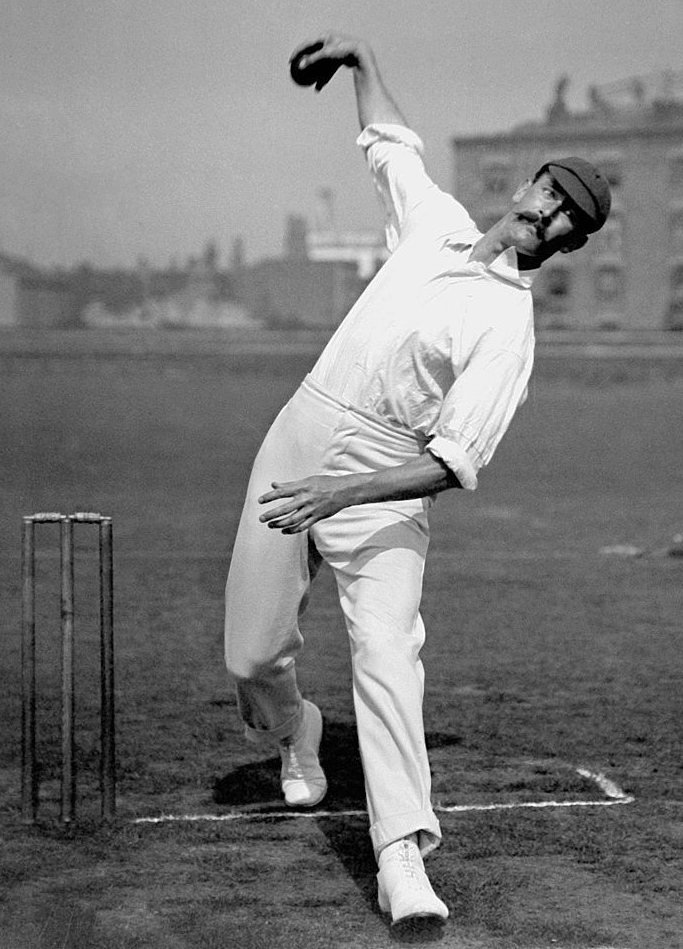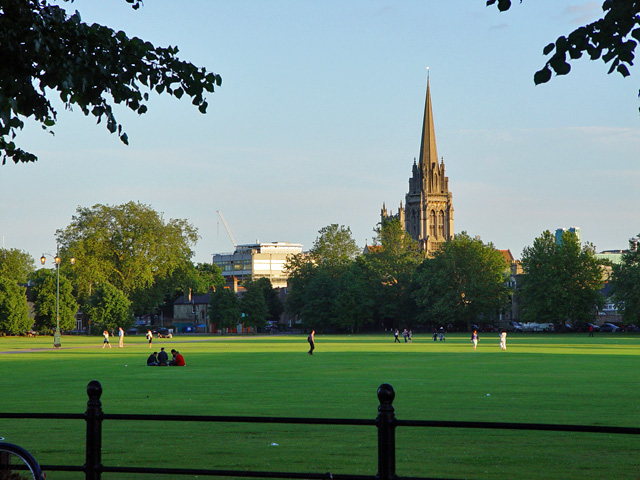|
Herbert Page
Herbert Vivian Page (30 October 1862 – 1 August 1927) was a first-class cricketer who played for Oxford University and Gloucestershire. An all-rounder, Page scored 4,005 runs and took 212 wickets in first-class cricket. As an occasional wicket-keeper, he also made 14 stumpings. He played for Cheltenham College in 1881 and 1882 with some success, and when he went to Wadham College, Oxford, he made the university cricket team in his first year. Playing in the University Match against Cambridge each year between 1883 and 1886, he scored consistently, reached fifty on two occasions, and was captain in his final two years. Page also played for Gloucestershire between 1883 and 1895, scoring one century, and was regularly selected in the prestigious Gentlemen v Players matches between 1884 and 1894. Although selected for a representative tour to Australia in 1887–88, he was unable to go. According to '' Wisden Cricketers' Almanack'', his best innings was a score of ... [...More Info...] [...Related Items...] OR: [Wikipedia] [Google] [Baidu] |
Lancaster, Lancashire
Lancaster (, ) is a city and the county town of Lancashire, England, standing on the River Lune. Its population of 52,234 compares with one of 138,375 in the wider City of Lancaster local government district. The House of Lancaster was a branch of the English royal family. The Duchy of Lancaster still holds large estates on behalf of Charles III, who is also Duke of Lancaster. Its long history is marked by Lancaster Castle, Lancaster Priory Church, Lancaster Cathedral and the Ashton Memorial. It is the seat of Lancaster University and has a campus of the University of Cumbria. The Port of Lancaster played a big role in the city's growth, but for many years the outport of Glasson Dock has become the main shipping facility. History The name of the city first appeared in the Domesday Book of 1086, as ''Loncastre'', where "Lon" refers to the River Lune and "castre" (from the Old English ''cæster'' and Latin ''castrum'' for "fort") to the Roman fort that stood on the site. Ro ... [...More Info...] [...Related Items...] OR: [Wikipedia] [Google] [Baidu] |
Cheltenham College
("Work Conquers All") , established = , closed = , type = Public schoolIndependent School Day and Boarding School , religion = Church of England , president = , head_label = Head , head = Nicola Huggett , r_head_label = , r_head = , chair_label = President of the Council , chair = W. J. Straker-Nesbit , founder = G. S. Harcourt, J. S. Iredell , specialist = , address = Bath Road , city = Cheltenham , county = Gloucestershire , country = England , postcode = GL53 7LD , local_authority = Gloucestershire , urn = 115795 , ofsted = http://www.cheltenhamcollege.org/Websites/cheltenham/Images/senior/About%20Us/Ofsted%20Report%20College%20April%202011%20.pdf Reports] , staff = 88 , enrolment = 720 , gender = Co-educational , lower_age = 13 , upper_age = 18 , houses = 11 , colours = , publication = , free_label_1 ... [...More Info...] [...Related Items...] OR: [Wikipedia] [Google] [Baidu] |
Surrey County Cricket Club
Surrey County Cricket Club (Surrey CCC) is a first-class club in county cricket, one of eighteen in the domestic cricket structure of England and Wales. It represents the historic county of Surrey, including areas that now form South London. Teams representing the county are recorded from 1709 onwards; the current club was founded in 1845 and has held first-class status continuously since then. Surrey have played in every top-level domestic cricket competition in England, including every edition of the County Championship (which began in 1890). The club's home ground is The Oval, in the Kennington area of Lambeth in South London. They have been based there continuously since 1845. The club also has an 'out ground' at Woodbridge Road, Guildford, where some home games are played each season. Surrey's long history includes three major periods of great success. The club was unofficially proclaimed as "Champion County" seven times during the 1850s; it won the title eight times ... [...More Info...] [...Related Items...] OR: [Wikipedia] [Google] [Baidu] |
Kingsmill Key
Sir Kingsmill James Key, 4th Baronet (11 October 1864 – 9 August 1932) was an English cricketer. Life and career Key was born in Streatham Common, London. He was educated at Clifton College and Oriel College, Oxford. In the course of a long career he played for, among others, Surrey County Cricket Club (whom he captained for several years in the 1890s), Oxford University, Marylebone Cricket Club (MCC) and the Gentlemen. His highest score of 281, for Oxford against Middlesex at Chiswick Park in 1887, remained the highest first-class score for the university until 2013. Key married Helen Abercrombie in Baguley, Cheshire, in 1888. They lived in London, where Key was a stockbroker, a member of the London Stock Exchange. He died at the age of 67 in Wittersham, Kent, having contracted blood poisoning after an insect bite. '' ... [...More Info...] [...Related Items...] OR: [Wikipedia] [Google] [Baidu] |
Bernard Bosanquet (cricketer)
Bernard James Tindal Bosanquet (13 October 1877 – 12 October 1936) was an English cricketer best known for inventing the googly, a delivery designed to deceive the batsman. When bowled, it appears to be a leg break, but after pitching the ball turns in the opposite direction to that which is expected, behaving as an off break instead. Bosanquet, who played first-class cricket for Middlesex between 1898 and 1919, appeared in seven Test matches for England as an all-rounder. He was chosen as a Wisden Cricketer of the Year in 1905. Bosanquet played cricket for Eton College from 1891 to 1896, before gaining his Blue at Oriel College, Oxford. He was a moderately successful batsman who bowled at fast-medium pace for Oxford University between 1898 and 1900. As a student, he made several appearances for Middlesex and achieved a regular place in the county side as an amateur. While playing a tabletop game, Bosanquet devised a new technique for delivering a ball, later named the " ... [...More Info...] [...Related Items...] OR: [Wikipedia] [Google] [Baidu] |
Googly
In the game of cricket, a googly refers to a type of delivery bowled by a right-arm leg spin bowler. It is different from the normal delivery for a leg-spin bowler in that it is turning the other way. The googly is ''not'' a variation of the typical off spin type of delivery, in that the cricket ball is presented from the bowler's hand in such a way that once the ball pitches; instead, it deviates in the opposite direction of a leg spinning type of delivery (i.e. towards the leg stump rather than the off stump). It has also been colloquially referred to as the wrong'un, Bosie or Bosey, with the latter two eponyms referring to Bernard Bosanquet, the bowler who originally devised and began using the googly. Explanation While a normal leg break spins from the leg to the off side, away from a right-handed batsman, a googly spins the other side, from off to leg, into a right-handed batsman (and is distinct from an off break delivery). The bowler achieves this change of spin by ... [...More Info...] [...Related Items...] OR: [Wikipedia] [Google] [Baidu] |
Jack Hobbs
Sir John Berry Hobbs (16 December 1882– 21 December 1963), always known as Jack Hobbs, was an English professional cricketer who played for Surrey from 1905 to 1934 and for England in 61 Test matches between 1908 and 1930. Known as "The Master", he is widely regarded as one of the greatest batsmen in the history of cricket. He is the leading run-scorer and century-maker in first-class cricket, with 61,237 runs and 197 centuries. A right-handed batsman and an occasional right-arm medium pace bowler, Hobbs also excelled as a fielder, particularly in the position of cover point. Hobbs was named as one of the five ''Wisden'' Cricketers of the Century alongside Sir Donald Bradman, Sir Garfield Sobers, Shane Warne, and Sir Viv Richards. Born into poverty in 1882, Hobbs wished from an early age to pursue a career in cricket. His early batting was undistinguished, but a sudden improvement in 1901 brought him to the attention of local teams. In 1903, he successfully applied to jo ... [...More Info...] [...Related Items...] OR: [Wikipedia] [Google] [Baidu] |
Field Hockey
Field hockey is a team sport structured in standard hockey format, in which each team plays with ten outfield players and a goalkeeper. Teams must drive a round hockey ball by hitting it with a hockey stick towards the rival team's shooting circle and then into the goal. The match is won by the team that scores the most goals. Matches are played on grass, watered turf, artificial turf, synthetic field, or indoor boarded surface. The stick is made of wood, carbon fibre, fibreglass, or a combination of carbon fibre and fibreglass in different quantities. The stick has two sides; one rounded and one flat; only the flat face of the stick is allowed to progress the ball. During play, goalkeepers are the only players allowed to touch the ball with any part of their body. A player's hand is considered part of the stick if holding the stick. If the ball is "played" with the rounded part of the stick (i.e. deliberately stopped or hit), it will result in a penalty (accidental touches ar ... [...More Info...] [...Related Items...] OR: [Wikipedia] [Google] [Baidu] |
Rugby Union
Rugby union, commonly known simply as rugby, is a close-contact team sport that originated at Rugby School in the first half of the 19th century. One of the two codes of rugby football, it is based on running with the ball in hand. In its most common form, a game is played between two teams of 15 players each, using an oval-shaped ball on a rectangular field called a pitch. The field has H-shaped goalposts at both ends. Rugby union is a popular sport around the world, played by people of all genders, ages and sizes. In 2014, there were more than 6 million people playing worldwide, of whom 2.36 million were registered players. World Rugby, previously called the International Rugby Football Board (IRFB) and the International Rugby Board (IRB), has been the governing body for rugby union since 1886, and currently has 101 countries as full members and 18 associate members. In 1845, the first laws were written by students attending Rugby School; other significant even ... [...More Info...] [...Related Items...] OR: [Wikipedia] [Google] [Baidu] |
Nottinghamshire County Cricket Club
Nottinghamshire County Cricket Club is one of eighteen first-class county clubs within the domestic cricket structure of England and Wales. It represents the historic county of Nottinghamshire. The club's limited overs team is called the Notts Outlaws. The county club was founded in 1841, although teams had played first-class cricket under the Nottinghamshire name since 1835. The county club has always held first-class status. Nottinghamshire have competed in the County Championship since the official start of the competition in 1890 and have played in every top-level elite domestic cricket competition in England. The club plays most of its home games at the Trent Bridge cricket ground in West Bridgford, Nottingham, which is also a venue for Test matches. The club has played matches at numerous other venues in the county. History Nottingham Cricket Club is known to have played matches from 1771 onwards and 15 matches involving this side have been awarded first-class sta ... [...More Info...] [...Related Items...] OR: [Wikipedia] [Google] [Baidu] |
Wisden Cricketers' Almanack
''Wisden Cricketers' Almanack'', or simply ''Wisden'', colloquially the Bible of Cricket, is a cricket reference book published annually in the United Kingdom. The description "bible of cricket" was first used in the 1930s by Alec Waugh in a review for the ''London Mercury''. In October 2013, an all-time Test World XI was announced to mark the 150th anniversary of ''Wisden Cricketers' Almanack''. In 1998, an Australian edition of ''Wisden Cricketers' Almanack'' was launched. It ran for eight editions. In 2012, an Indian edition of ''Wisden Cricketers' Almanack'' was launched (dated 2013), entitled ''Wisden India Almanack'', that has been edited by Suresh Menon since its inception. History ''Wisden'' was founded in 1864 by the English cricketer John Wisden (1826–84) as a competitor to Fred Lillywhite's '' The Guide to Cricketers''. Its annual publication has continued uninterrupted to the present day, making it the longest running sports annual in history. The sixth e ... [...More Info...] [...Related Items...] OR: [Wikipedia] [Google] [Baidu] |
Gentlemen V Players
Gentlemen v Players was a long-running series of English first-class cricket matches. Two matches were played in 1806, but the fixture was not played again until 1819. It became an annual event, usually played at least twice each season, except for the years 1826, 1828, 1915–1918 (due to World War I) and 1940–1945 (due to World War II). In essence, it was a match between teams consisting of amateur ("Gentlemen") and professional cricketers ("Players") that reflected the English class structure of the 19th century: the Players were working class cricketers who earned their living through the game, whilst the Gentlemen were middle- and upper-class cricketers, usually products of the public school system, who were unpaid. For the matches, the Players were paid wages by their county clubs and/or fees by the match organisers, while the Gentlemen nominally only claimed expenses. However, while rules to distinguish amateurs from professionals were established by the Maryleb ... [...More Info...] [...Related Items...] OR: [Wikipedia] [Google] [Baidu] |







